Interacting with the Environment
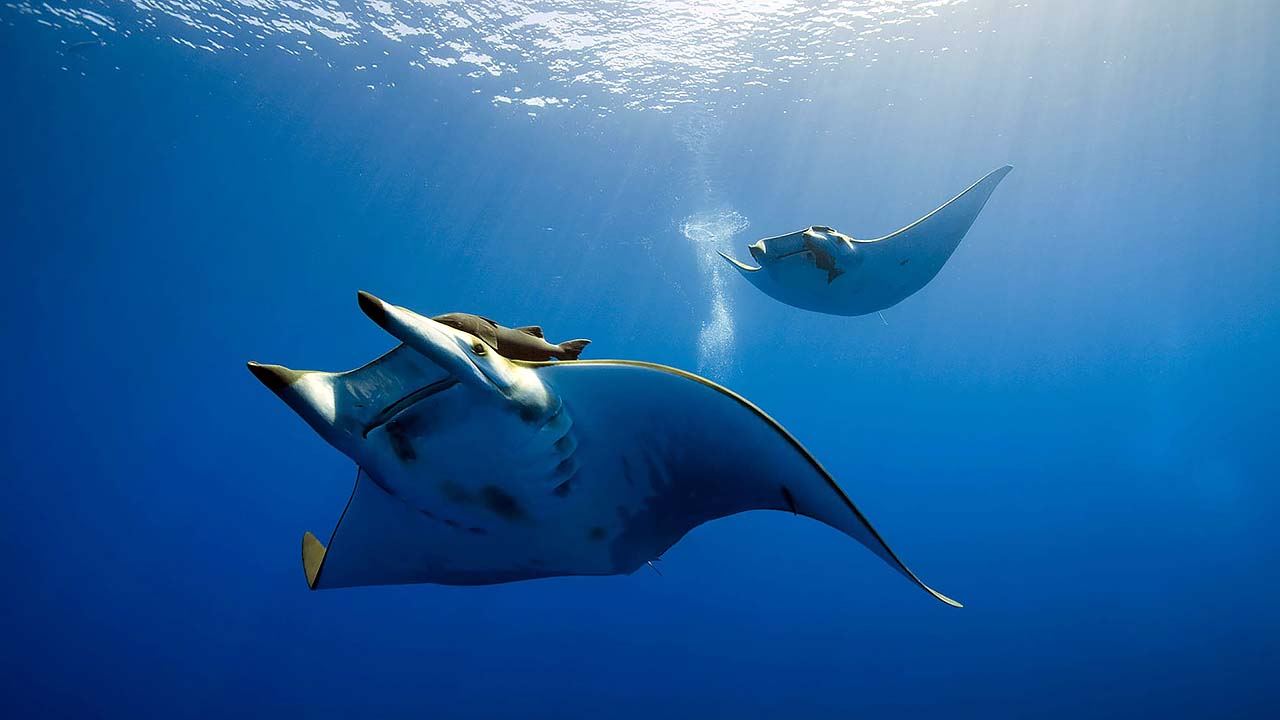
In this section, we discuss:
- Aquatic Toxins
- Underwater Predators
- Responsible Interaction
- What are the two general types of toxins that divers need to be aware of?
- What are some of the ways to reduce your chances of encountering an underwater predator?
- What are several examples of responsible aquatic life interaction?
- What additional steps can you take to help protect the aquatic environment?
Aquatic Toxins
The two general types of toxins produced by venomous marine animals that divers need to be aware of are oral toxins and parenteral toxins.
- Oral toxins are heat stable and unaffected by cooking. Divers who spear fish and collect crabs and shellfish can unknowingly ingest these toxins despite having cooked their catch. For example, filter feeders such as mussels, clams, oysters and scallops accumulate Saxitoxin, a neurotoxin, commonly found in marine plankton. Saxitoxin causes Paralytic Shellfish Poisoning (PSP). Symptoms include nausea, vomiting, diarrhea, abdominal pain, and tingling or burning sensations.
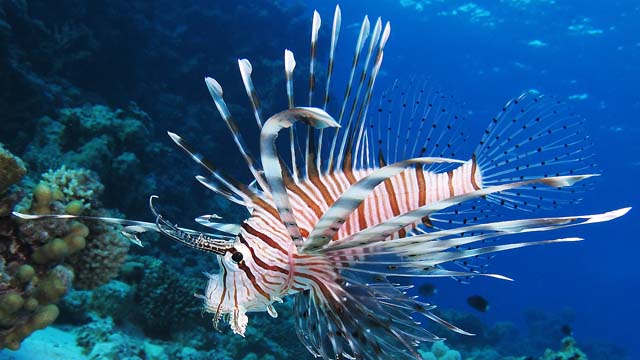
- Parenteral toxins are produced in a highly developed secretory gland (venom sac) and are delivered through stings or bites. Divers can easily protect themselves from this type of toxin by avoiding certain marine animals and always wearing full-length exposure protection.
Underwater Predators
Among the things you will find in old diver-training materials are dire warnings about the dangers of “underwater predators.” Given that, today, divers clamor for the opportunity to take part in shark-feeding dives, photograph Great Whites or take part in supervised animal-interaction experiences, this narrow-minded view of large aquatic animals seems quaint at best — and downright bigoted at worst.
Ironically, many of these texts stopped short of clearly identifying exactly what these supposed “predators” were. Sharks readily come to mind, however, in the rare circumstances in which scuba divers actually managed to get themselves bitten, the culprits included barracuda, moray eels and even leopard seals.
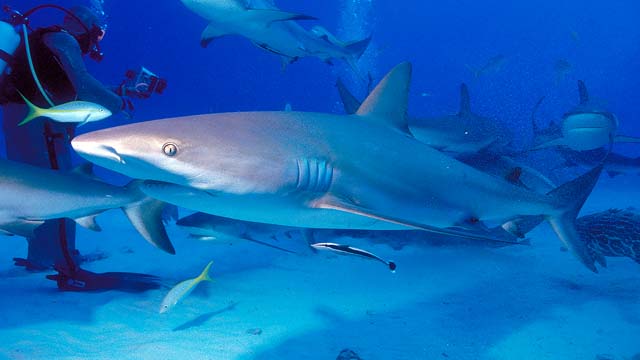
The vast majority of aquatic life injuries to divers involve cuts, scrapes, stings and abrasions. In those rare instances where an animal bites, it is almost always a case of defensive behavior or mistaken identity — and not because the animal thought something clad in neoprene and metal might actually be good to eat.
Nevertheless, there are some common sense guidelines you should follow:
- Avoid diving in areas where potential predators, such as sharks or barracuda, are known to congregate.
- Don’t spear fish if sharks or barracuda are present. These predators can sense a distressed and wounded fish — especially if they are bleeding. If a large predator decides it wants your speared fish, let the fish go, leave the area and end the dive. The predator should go after the fish and ignore you. Don’t try to fight it off.
- Do not wear shiny jewelry. A dangling necklace or earring can resemble a wiggling fish in its death throes. Barracuda love these.
- Do not aggravate or handle any potential predator. You won’t like its response.
- Do not stay on the surface longer than you have to. Some sharks feed on sea lions, seals and other fish near the surface. If you resemble its prey on the surface, a predator might mistake you for one of its normal food sources.
Responsible Aquatic Life Interaction
One of the most amazing things about the underwater environment is that most aquatic animals do not flee at the sight of humans the way so many land animals do. In fact, so long as they can stay out of arm’s reach, most aquatic animals are content to simply let us go about our business, as long as they can go about theirs. This means that we may actually have a better chance of observing animal life under water than we do on the surface.

With this opportunity comes the responsibility to not cause harm to the very creatures we come to observe. Unfortunately, careless, unthinking or uninformed divers can cause considerable injury to our aquatic brethren. For example:
- Chasing, grabbing or cornering an animal can cause it to hurt itself while trying to escape. It can also cause the animal to flee a habitat in which it is relatively safe, exposing it to predators it would otherwise avoid.
- Feeding animals food that is not part of their normal diet can make them sick or even kill them. Making animals dependent on humans for food can alter their behavior and decrease their chances for long-term survival.
- Favoring one species over another can lead to a population imbalance, which can have an adverse effect on the environment as a whole.
Obviously, the best thing divers can do when it comes to aquatic animal life is look — but don’t touch. Do not approach, chase or corner any animal. And don’t feed the animals or do anything else that alters their natural behavior.
At popular dive destinations, it’s not unusual for dive guides, over time, to develop a personal relationship with individual animals. Some of these professionals will use this relationship to not only entertain visiting divers, but also to educate them as to why aquatic animals are nothing to be afraid of. Shark and manta ray dives, for example, have done much to teach the public that these are not mindless killers, bent only on eating people.
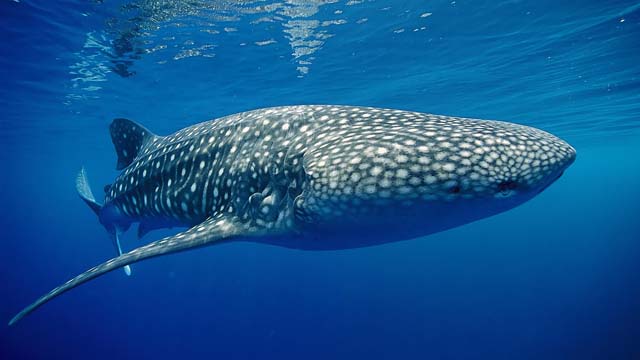
Still, the practice is not without controversy. Any aquatic life interaction has the potential to alter natural behavior. The question is whether any long-term benefits to a particular species offset any short-term damage. If you have doubts, you will certainly not cause any animal harm by choosing not to participate in such encounters.
If you do choose to take part in an organized aquatic animal encounter, you may want to ensure it adheres to the following guidelines:
- All participation by animals is voluntary. The animals are not captives and are free to come or go as they please.
- If feeding is involved, the menu does not include anything that is not already part of the animals’ natural diet.
- The animals are not fed daily and, consequently, have not become dependent on humans for food.
- Nothing in the encounter frightens or stresses the animals.
- Those conducting the encounter are well trained or are relying on a personal relationship they have developed with specific animals over a long period of time.
Experiences such as these should be seen as an opportunity. Make sure you come away with lots of photos or video. Use these images to educate others, so that both you and they become ambassadors for our aquatic brethren.
Protecting the Environment
As a diver, you must take an active role in protecting and conserving the underwater environment. You can do this by practicing good buoyancy control and avoiding contact with the bottom, animals and coral with your body and fins. You should also secure your alternate air source and gauges to prevent them from dragging the bottom.
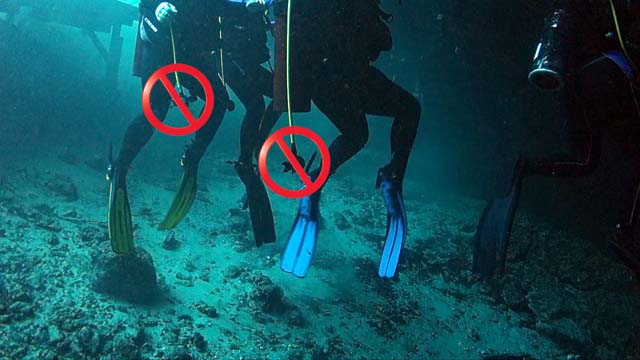
Out of the water, you can become an advocate for responsible environmental practices. Be mindful of discharging toxic chemicals, trash and other pollutants into any body of water. Substances like pesticides, plastics, oil and other toxic wastes, if not properly disposed of, even on land, can ultimately affect the aquatic environment.
Key Points to Remember
- The two general types of toxins produced by venomous marine animals that divers need to be aware of are oral toxins and parenteral toxins.
- The following guidelines will reduce your chances of an unpleasant encounter with an underwater predator:
- Do not dive where underwater predators are known to congregate
- Do not spear fish if underwater predators are in the area
- ]Do not aggravate or handle underwater predators
- Do not stay on the surface longer than you have to
- Irresponsible aquatic life interaction has to potential to cause considerable harm. The safest and best course of action is to simply look, but not touch or feed. Leave direct aquatic life interaction to the professionals.
- The following practices will help you protect and conserve the underwater environment:
- Do not litter or discharge pollutants into the water
- Pick up trash on the beach or underwater
- Practice good buoyancy control and avoid coming into contact with the bottom, animals and coral with your body or fins
- Secure your alternate air source and gauges so that they don’t drag and come into contact with the bottom
